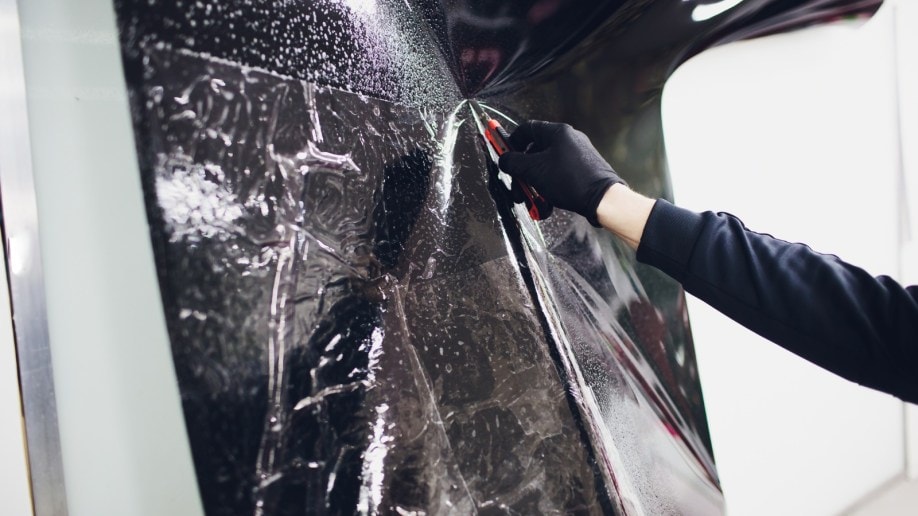Auto Window Tinting: What to Expect During the Installation Process
Auto Window Tinting: What to Expect During the Installation Process
Blog Article
Home Window Tinting Laws and Standards: What You Need to Know Prior To Tinting Your Automobile
Prior to proceeding with home window tinting for your car, it is vital to familiarize yourself with the diverse legislations and standards that govern this method throughout various states. These laws determine the permitted levels of tint darkness, usually measured by noticeable light transmission (VLT) percentages, and consist of details terms for front windshields aimed at making sure roadway safety and security. In addition, particular jurisdictions may supply medical exemptions for people with qualifying conditions. Comprehending these complexities can save you from prospective legal ramifications, yet what are the certain policies in your state?
Review of Home Window Tinting Rules
Window tinting legislations are frequently based on variation across different jurisdictions, reflecting neighborhood regulations and safety and security considerations. These laws determine the acceptable levels of color darkness and reflectiveness on automobile home windows, making sure that drivers maintain appropriate exposure while additionally securing against damaging UV rays and heat.
The majority of guidelines classify window tinting based upon the Visible Light Transmission (VLT) percent, which shows the amount of light that can pass through the home window. Typically, lower VLT portions indicate darker tints. Regulations usually set apart in between the front, side, and back home windows, with stricter constraints put on the front windscreen to enhance safety for both the vehicle driver and other roadway users.
Conformity with home window tinting laws is critical, as violations can result in fines, necessary elimination of the tint, and potential increases in insurance policy costs. It is essential for car owners to familiarize themselves with regional laws before continuing with home window tinting installations.
State-by-State Color Laws
Understanding the particular window tinting policies in each state is important for lorry proprietors looking for to adhere to the legislation. Each state in the united state has actually established its own collection of regulations controling home window tinting, which can differ significantly. These policies typically dictate the allowable degrees of color darkness, the kinds of home windows that can be tinted, and any kind of clinical exceptions that may apply.
For example, states like California have rigorous constraints on tint darkness for front home windows, while others, such as New Mexico, may enable darker colors. In addition, certain states mandate certain visibility portions for various windows, consisting of the windscreen, front side home windows, and back home windows. It is crucial for cars and truck proprietors to familiarize themselves with their state's laws to stay clear of possible fines or charges.
Moreover, some states might call for a qualification sticker to be put on tinted windows, suggesting compliance with state laws. Failing to comply with these regulations not only risks lawful repercussions but can additionally impact safety and security and presence while driving. For that reason, lorry owners must conduct extensive research study or consult local authorities to make certain full understanding and conformity with state-by-state color laws.
Allowed Color Degrees and Kinds
Numerous vehicle proprietors might be amazed to find out that permitted color degrees and kinds vary extensively throughout various states. Each state has established its own laws concerning the acceptable darkness and reflectivity of home window color, frequently determined by Visible Light Transmission (VLT) percentages. VLT refers to the amount of light that can go through the colored home windows; therefore, a lower percentage shows a darker tint.

Additionally, the sorts of color products enabled can vary, with some states banning mirror-like or metal coatings. It is crucial for automobile proprietors to familiarize themselves with their state's certain laws to make certain conformity. Non-compliance can lead to fines, mandatory elimination of the color, or various other lawful consequences, making it important to understand these guidelines prior to waging setup.
Medical Exemptions for Tinting
While not all states provide allowances for medical exemptions relating to window tinting, those that do identify the need for particular individuals to improve visibility and comfort as a result of medical conditions. Various medical conditions, such as lupus, skin cancer cells, and certain eye problems, can render individuals especially sensitive to sunshine. These people may need darker colors to safeguard themselves from harmful UV rays and glow.

It is essential to keep in mind that despite having a clinical exemption, there may still be constraints on the level of color permitted. Conformity with state regulations ensures that individuals are both safeguarded and within legal limitations. Those considering medical exceptions need to contact their regional Division of Electric motor Autos or comparable authority to recognize the treatments and requirements essential to make an application for an exception successfully.
Charges for Non-Compliance
Stopping working to abide with home window tinting laws can cause significant fines, which differ by state. Police are empowered to release citations for cars that do not follow the specified tinting regulations. These penalties generally include fines, which can vary from moderate quantities to a number of hundred bucks, relying on the seriousness of the offense and the state in concern.
In some territories, repeated offenses may lead to rising penalties or extra penalties, such as compulsory court appearances. Non-compliance might demand the elimination of prohibited tinting, frequently at the owner's expense. In extreme cases, habitual wrongdoers may deal with suspension of their car registration until compliance is achieved.
Additionally, insurance coverage effects might develop from obtaining numerous citations for home window color infractions. Insurance firms may watch such infractions as an indication of riskier actions, possibly leading to enhanced costs or trouble in insurance coverage.
To prevent these fines, it is vital for automobile owners to acquaint themselves with their regional window tinting legislations and make sure that their car complies (Window Tinting). This proactive approach not only avoids lawful ramifications but additionally promotes road safety and security
Final Thought

The majority of see this website policies identify home window tinting based on the Visible Light Transmission (VLT) portion, which suggests the amount of light that can pass with the home window. Compliance with home window tinting laws is important, as infractions can result in penalties, mandatory removal of the tint, and prospective boosts in insurance policy premiums.Comprehending the certain home window tinting laws in each state is essential for lorry proprietors seeking to comply with the law. These policies usually dictate the allowed degrees of color darkness, the types of windows that can be tinted, and any type of medical exceptions that may apply.
For instance, states like California have strict restrictions on color darkness for navigate to this website front home windows, while others, such as New Mexico, might enable darker tints.
Report this page